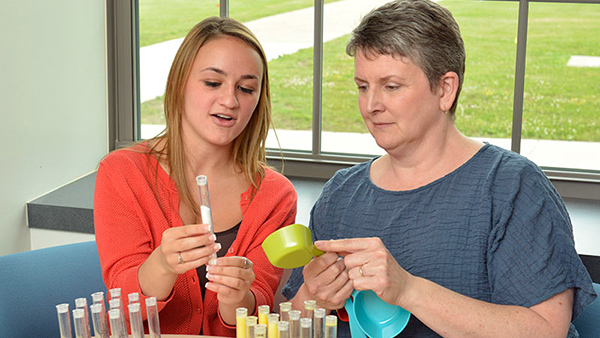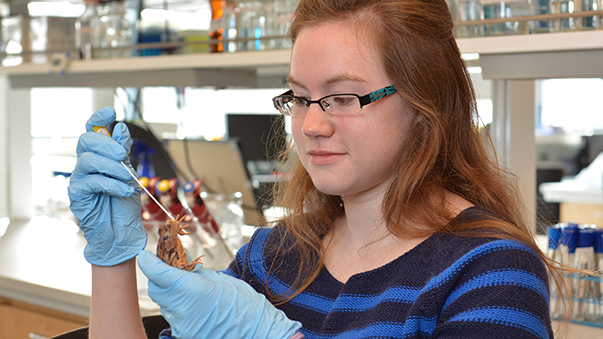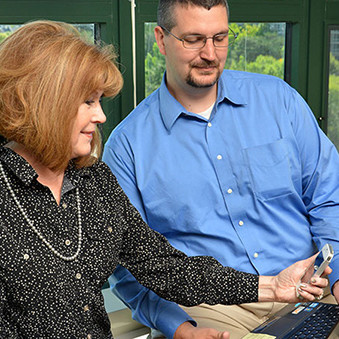Pursuing solutions
As a healthy institution, SUNY Oswego has the latitude and flexibility to explore and experiment beyond our core mission and address the challenges of our time. In 2014-15, we directed many of these efforts to improving human and ecological health and safety.
Striving for a healthy, protected populace
From promoting good nutrition in order to combat obesity to better predicting volcanic eruptions in order to preserve life and property, Oswego’s faculty and students partnered with colleagues around the globe in 2014-15 to make the world a better place.
Our health and wellness faculty are leading an international project to fight childhood obesity. With a grant from 100,000 Strong in the Americas, it trains students to help obese 11- and 12-year-olds in Oswego County and in northeast Brazil learn about nutrition, exercise and behaviors that trigger unhealthy eating. Partners include Fayetteville physician Wendy Scinta, SUNY Ulster’s nursing program, and Brazil’s Faculdades Integradas de Patos.

Teaching good nutrition
Many of our students working on the project here and in Brazil are studying nutrition, which the college launched as an academic minor in 2015. The program equips students with introductory understanding of the chemical, emotional, social, spiritual and financial components of nutrition across the human lifespan.
Other health-promoting initiatives of our faculty, staff and students included a wide-ranging research partnership with Upstate Medical University that takes advantage of our expertise in wireless devices and systems, a tobacco-free campaign on our own campus that kicked off Jan. 1, 2015, and a project by our human development program to apply a life review process to allay depression among older adults.
Projects grounded in a dedication to people’s safety ranged from a research project on how lava flows in Hawaii to a public presentation on human trafficking in Upstate New York.

Studying lava flows
Geology professor Rachel Lee studies the behavior of lava as it flows from Mount Kilauea and in laboratory simulations on our campus under a grant from the National Science Foundation. She is working with colleagues from the University of Pittsburgh, Blaise Pascal University in France and the Hawaiian Volcano Observatory. Their overarching goal is to improve safety and reduce hazards through more accurate prediction.
More than 150 people packed a campus conference room in March 2015 to hear from experts on human trafficking, part of our public justice department’s Cutler series. They focused on how to identify and take action against sex and labor exploitation in Upstate New York. The speakers challenged the audience to be vigilant in their communities for signs of this human rights crisis.
Environmental sustainability
As one of the world’s most environmentally responsible colleges, according to Princeton Review, Oswego continued longstanding sustainability initiatives and launched new ones in 2014-15.

Permaculture work underway
Dozens of students, faculty and staff have had a hand in creating a Permaculture Living Laboratory in the Lee Hall quad between Lee and the Shineman Center for Science, Engineering and Innovation. The project aims to become a model of a self-sufficient agricultural ecosystem as well as a park-like space for peaceful reflection.
Students’ environmental initiatives included a range of research projects, such as studies of threats to amphibians in Central New York, and an award-winning recycling program.

Amphibian study
Biology major Calee Wilson worked with two of her professors, Jennifer Olori and Sofia Windstam, on projects that examined ecological disruptions that threaten frogs and salamanders. She conducted a historical study of a potentially species-destroying fungus using our Rice Creek Field Station specimen collections and another study that examined whitetail deer’s destruction of amphibian habitat.
A student-led recycling effort and social media campaign, dubbed Garbage Pail Kids, won two national recognitions, in a competition sponsored by RecycleMania and in Purposeful Networks’ Student Actions Awards. Chelsea Frisbie, a broadcasting major interning with the college’s Sustainability Office, created the program. It involved more than 20 volunteers in a recycling-education program relying on both social media and students stationed at waste containers around campus.
Green college
19% college’s waste diversion rate
13% of college’s food dollars go to locally grown or organic products
0.1133 average energy use intensity (MBtu/square foot/year)
28,724 metric tons of greenhouse gas emissions in 2015
Spotlight: A smartphone solution for stress

Professor of psychology Karen Wolford and a former student of hers, Arthur Delsing, are developing a mobile phone application to help people with anxiety disorders, particularly veterans dealing with post-traumatic stress.
A grant from the National Science Foundation in 2014-15 helped get the project off the ground. Based on mindfulness-based stress reduction research, the app is designed to provide users feedback and encouragement for taking steps to reduce stress.
The developers are taking a proven cognitive training method and personalizing it for each user to help them stick with the program. Individualization is the product’s competitive edge and should boost its adoption by therapists and their clients.
